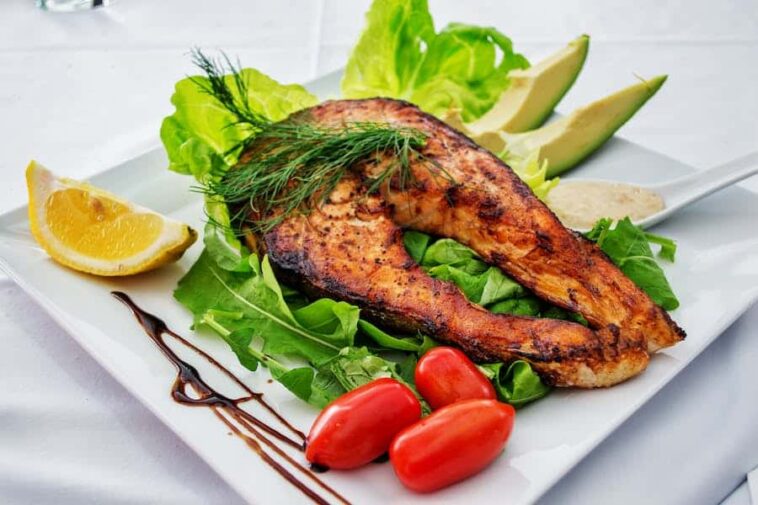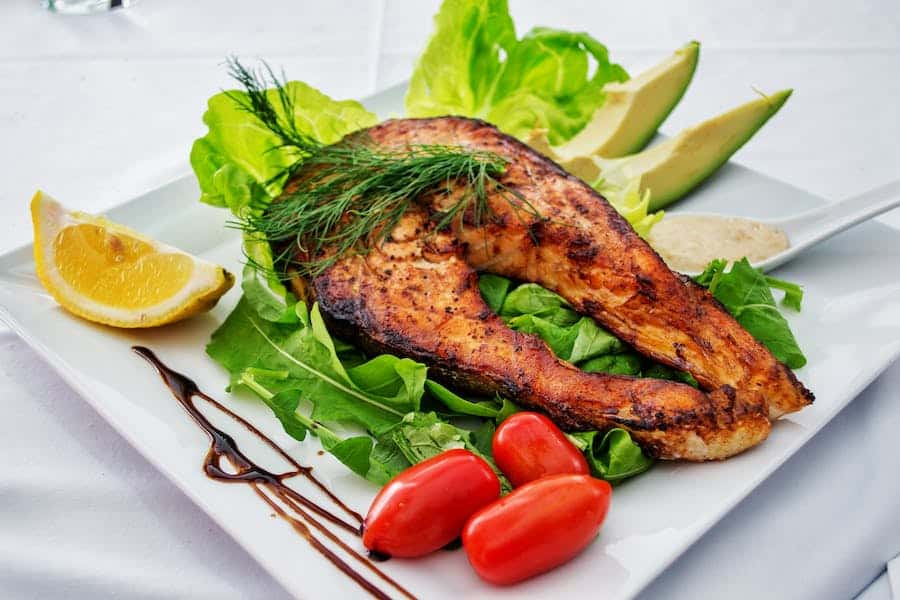When it comes to choosing seafood for your meals, the array of options can be overwhelming. Among the many fish species available, swai fish, also known as pangasius or basa, has captured the attention of consumers and food enthusiasts alike. However, it hasn’t done so without raising a few eyebrows along the way. With questions swirling about its safety and environmental impact, it’s time to dive deep into the world of swai fish and separate fact from fiction. In this comprehensive blog, we’ll explore the controversies, nutritional aspects, and everything you need to know to answer the burning question: Is swai fish safe to eat? Join us on this seafood journey as we uncover the truth behind this intriguing catch.
Is Swai Fish Safe To Eat?
Swai fish can be safe to eat if sourced from reputable suppliers that adhere to responsible and sustainable farming practices. It’s essential to ensure proper cooking and consider your individual health factors. Making informed choices and prioritizing quality and sustainability can help you enjoy swai fish safely as part of your diet.

Is Swai Fish Safe For Consumption?
To determine whether swai fish is safe to eat, we need to examine different factors:
1. Nutritional Profile
Swai fish is a good source of lean protein, low in saturated fat, and a rich source of essential nutrients like vitamin D, vitamin B12, and omega-3 fatty acids. It can be a healthy addition to your diet if consumed in moderation.
2. Contaminants
Concerns have been raised about potential contaminants in swai fish, such as heavy metals and pesticides. To mitigate this risk, it’s advisable to purchase swai fish from reputable sources that adhere to strict quality standards and regulations.
3. Farming Practices
As mentioned earlier, the farming practices associated with swai fish can vary widely. To make a safe choice, opt for swai fish that is certified by reputable organizations like the Aquaculture Stewardship Council (ASC) or the Global Aquaculture Alliance (GAA). These certifications ensure that the fish is produced using responsible and sustainable methods.
4. Preparation And Cooking
Proper preparation and cooking are essential when consuming swai fish. Cooking swai fish thoroughly to an internal temperature of 145°F (63°C) can help eliminate any potentially harmful bacteria or parasites.
5. Personal Health Considerations
Individual health factors should also be taken into account. If you have specific allergies or health conditions, consult with a healthcare professional before including swai fish in your diet.
The Controversy Surrounding Swai Fish
Swai fish, also known as Pangasius, is a type of freshwater catfish that has become a subject of controversy and debate in recent years. This controversy primarily revolves around several key issues:
- Farming Practices: Much of the controversy surrounding Swai fish stems from the way it is farmed. Swai is often raised in large-scale fish farms, particularly in countries like Vietnam, where it is one of the leading seafood exports. Critics argue that some of these farms may not adhere to strict environmental and sustainability standards. Concerns include the use of antibiotics and chemicals, overcrowded conditions, and the impact on local ecosystems.
- Quality And Safety Concerns: There have been reports of subpar farming conditions in some Swai fish farms, which has raised concerns about the quality and safety of the fish. There have been instances of contamination, including the use of harmful chemicals and improper handling practices, which have led to concerns about food safety.
- Mislabeling And Fraud: Swai fish has been subjected to mislabeling and fraud in some cases. It is sometimes marketed as other fish species, such as catfish or sole, to fetch higher prices. This can mislead consumers and has led to regulatory actions to ensure accurate labeling in some regions.
- Nutritional Profile: Swai fish is often compared to other seafood options in terms of its nutritional value. While it is a source of lean protein, some argue that it lacks the omega-3 fatty acids found in other fish like salmon and trout. This has led to debates about whether Swai is a healthy choice for consumers seeking omega-3s and other essential nutrients.
- Ethical Concerns: The controversy also extends to ethical concerns, such as labor practices and workers’ rights in the Swai fish industry. There have been reports of poor working conditions in some Swai fish processing plants, which has raised questions about the treatment of workers involved in the production process.
It’s important to note that not all Swai fish production is problematic, and there are efforts to improve the sustainability and quality of Swai farming practices. Some certifications, such as the Aquaculture Stewardship Council (ASC) certification, aim to address environmental and social concerns in aquaculture, including Swai fish farming.
Making An Informed Choice
Making an informed choice when it comes to purchasing and consuming Swai fish or any seafood involves considering several factors. Here’s a step-by-step guide to help you make an informed decision:
- Research The Source: Find out where the Swai fish you are considering purchasing comes from. Different countries may have varying regulations and standards for fish farming. Research the environmental and social practices associated with Swai production in that region.
- Look For Certifications: Certifications from organizations like the Aquaculture Stewardship Council (ASC) and the Global Aquaculture Alliance (GAA) can indicate that the Swai fish has been produced using responsible and sustainable practices. These certifications often require compliance with environmental and social standards.
- Check For Labeling: Examine the packaging and labels on the product. Ensure that the labeling accurately identifies the fish as Swai and provides information about its origin. Mislabeling is a common issue in the seafood industry, so accurate labeling is essential.
- Ask Questions: If you have questions or concerns about the Swai fish you are considering, don’t hesitate to ask the retailer or supplier for more information. They should be able to provide details about the source, production methods, and any relevant certifications.
- Consider Alternatives: Depending on your dietary preferences and nutritional requirements, consider whether Swai fish is the best choice for you. If you’re looking for specific nutrients like omega-3 fatty acids, you might want to explore alternative seafood options like salmon or trout, which are known for their higher omega-3 content.
- Read Reviews And Reports: Look for consumer reviews and reports on Swai fish brands or products. Other consumers’ experiences and assessments can provide valuable insights into the quality, taste, and safety of the fish.
- Support Responsible Brands: If you find a brand or supplier that consistently meets your criteria for responsible and sustainable sourcing and ethical practices, consider supporting them by purchasing their products.
- Stay Informed: Keep yourself updated on the latest news and developments in the seafood industry, especially regarding Swai fish. Regulations and practices can change over time, so staying informed will help you make more informed choices.
- Consider Your Values: Think about your personal values and priorities when it comes to food consumption. If sustainability, ethical sourcing, and environmental impact are important to you, prioritize products that align with these values.
- Cook And Prepare Safely: When you do purchase Swai fish or any seafood, handle and prepare it safely to reduce the risk of foodborne illnesses. Follow recommended cooking temperatures and hygiene practices.
Ultimately, making an informed choice about Swai fish involves a combination of research, responsible sourcing, and personal preferences. By taking these steps, you can make choices that align with your values and ensure that the Swai fish you consume is safe and responsibly sourced.
The Bottom Line
In conclusion, the safety of swai fish depends on various factors, including its source, farming practices, and your own health considerations. When sourced responsibly and prepared correctly, swai fish can be a safe and nutritious addition to your diet. However, it’s essential to stay informed, make conscious choices, and prioritize sustainability in your seafood selections.
Remember that the seafood industry is constantly evolving, with increased awareness of sustainability and responsible practices. As a consumer, you have the power to drive positive change by supporting ethical and eco-friendly seafood choices. So, the next time you consider adding swai fish to your menu, do so with confidence, armed with the knowledge to make the best choice for your health and the environment.
FAQ’s
Is Swai Fish Safe To Eat?
The safety of Swai fish, like any other seafood, can vary depending on its source and how it’s processed and prepared. While Swai fish can be safe to eat, there have been concerns about the quality and safety of some Swai products, particularly those from poorly regulated farms. To ensure safety, look for reputable brands, check for accurate labeling, and follow recommended cooking and handling practices to reduce the risk of foodborne illnesses.
Is Swai Fish Sustainable?
Swai fish farming practices have faced scrutiny due to environmental concerns, such as the impact on water quality and local ecosystems. However, some Swai producers have made efforts to improve sustainability through certifications like the Aquaculture Stewardship Council (ASC). When evaluating the sustainability of Swai fish, it’s essential to consider the source, certifications, and farming practices. Look for products that meet established sustainability criteria if this is a priority for you.
How Does Swai Fish Compare To Other Seafood Nutritionally?
Swai fish is often considered a lean source of protein, similar to other white fish like tilapia. However, it tends to have lower levels of omega-3 fatty acids compared to fish like salmon, mackerel, or trout, which are known for their high omega-3 content. If you’re seeking omega-3s and other specific nutrients, you may want to choose alternative seafood options. Swai can still be part of a balanced diet, but it may not provide the same nutritional benefits as some other fish species.





